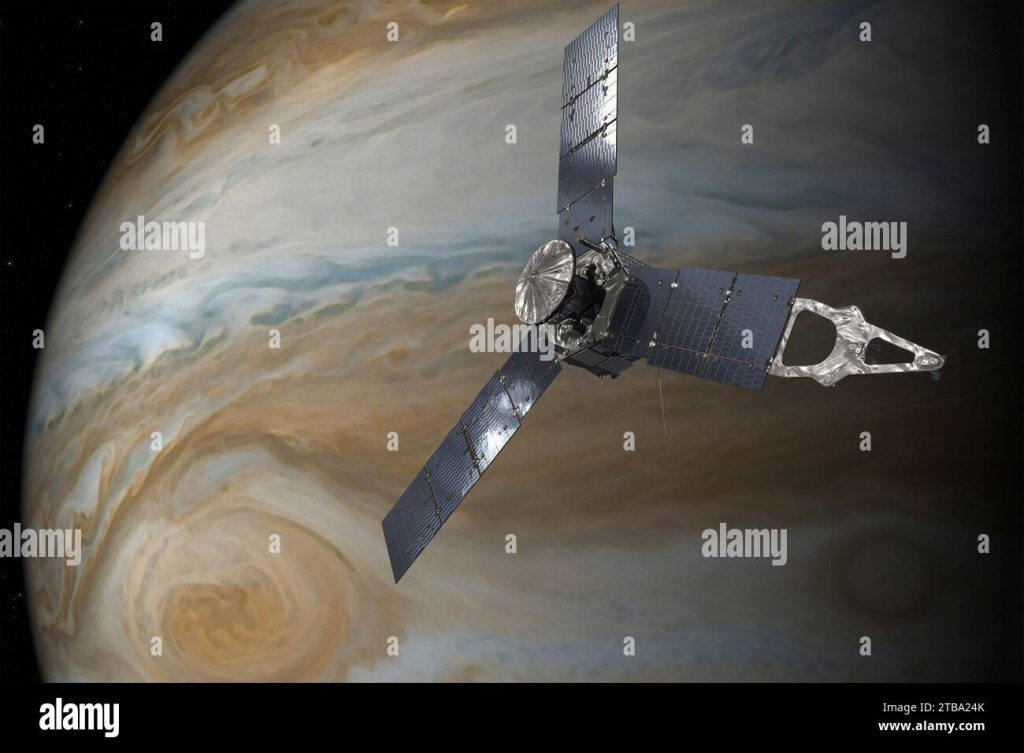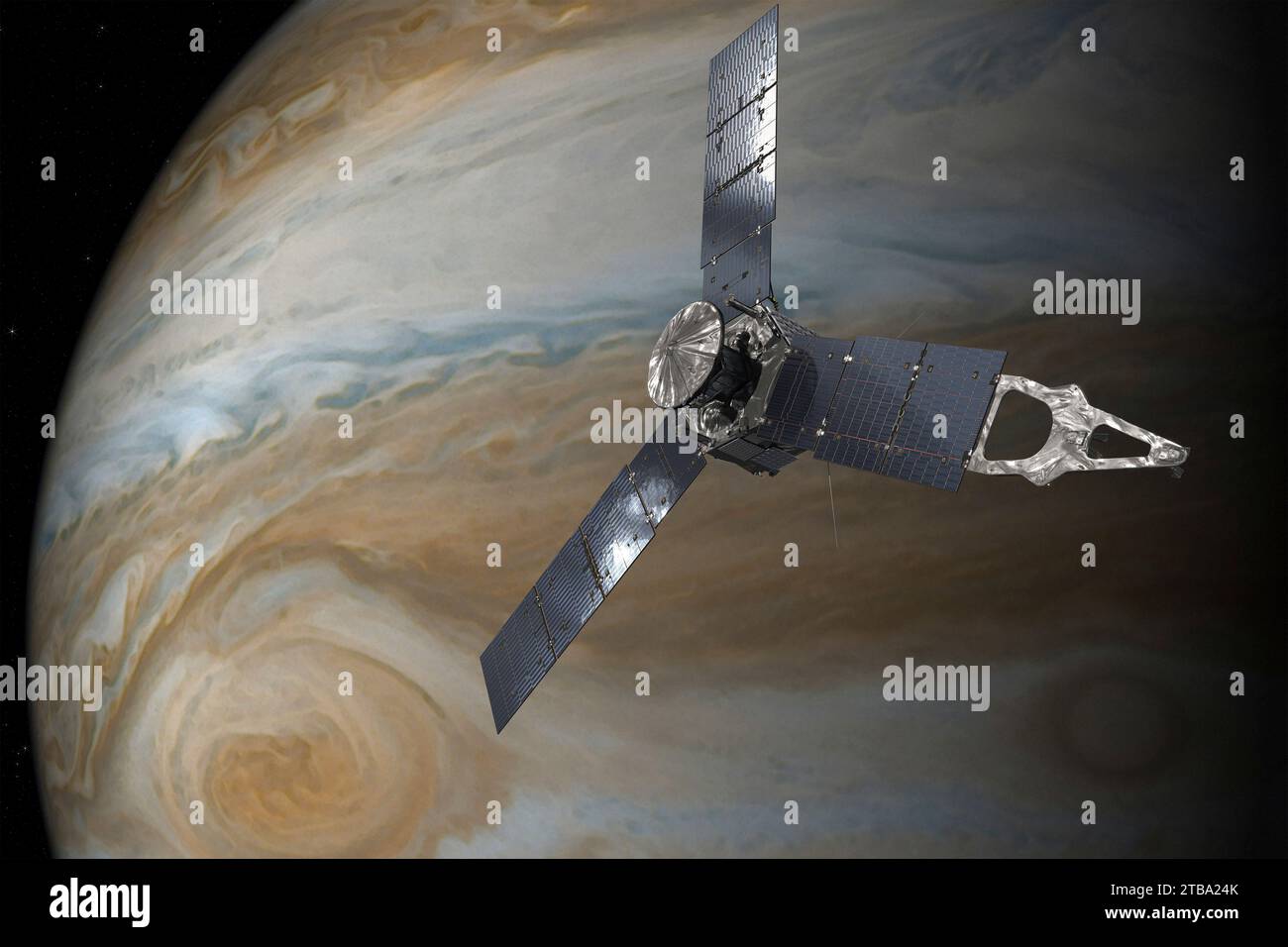
Breathtaking Fresh Pictures of Jupiter Taken During Recent Flyby by NASA’s Juno Spacecraft

### NASA’s Juno Mission: An Incredible Journey Through Jupiter’s Chaotic Atmosphere
On October 23, 2023, NASA’s Juno spacecraft accomplished its 66th **perijove**, a close approach to the gas giant Jupiter, marking yet another achievement in its relentless investigation of our solar system’s largest planet. Having launched in August 2011 and entered orbit around Jupiter in July 2016, Juno is uncovering the enigmas of this spinning giant, providing not only breathtaking imagery but also crucial scientific information. One of the unique aspects of the mission is its open access to raw image data, which has inspired a surge of creativity among citizen scientists worldwide, allowing them to transform Juno’s signals into stunning artistic and analytical creations.
### The Importance of Juno
Juno’s mission goes beyond merely providing striking images of Jupiter. It is aimed at penetrating the gas giant’s tumultuous atmosphere and examining its meteorological systems, gathering insights on Jupiter’s cyclonic storms, thunderstorms, and massive cloud bands. The spacecraft also intends to investigate Jupiter’s **magnetic and gravitational fields** to enhance our understanding of the planet’s development and structure, as well as the genesis of our solar system.
A significant aspect of Juno’s contribution is its analysis of **Jupiter’s poles**. Before Juno’s arrival, previous missions to Jupiter, like the Galileo orbiter, concentrated on its equatorial region. In contrast, Juno has offered the first glimpse of the planet’s northern and southern poles, disclosing vast, swirling cyclones that are truly unique within the solar system.
A substantial portion of the data Juno collects is transmitted to Earth through one of its key instruments: the **JunoCam**. This visible-light instrument may possess a modest **2-megapixel** resolution when compared to contemporary cameras, but its impact is significant. Fitted with four filters that capture different wavelengths of light, JunoCam consistently relays unprecedented perspectives of the gas giant’s atmosphere.
### Citizen Scientists Turn Raw Data into Artworks
When Juno’s raw image data is transmitted back to Earth, it is not instantly accessible to the public. Rather than relying on a dedicated team of scientists to modify and refine the images, NASA has chosen to provide the raw data publicly. This approach has encouraged **citizen scientists**—keen amateurs from varied backgrounds—to process and elevate the images with advanced editing methods.
Once refined by these volunteer editors, who often use specialized software, the images are uploaded to the **JunoCam website**, where the public can delve into the remarkable outcomes. These representations are not precise replicas of what the human eye would behold when viewing Jupiter, and that is intentional. By focusing on **color contrasts** or selecting particular hues, the editors strive to reveal elements of Jupiter’s intricate atmospheric dynamics that might otherwise go unnoticed.
From emphasizing chaotic storms to highlighting the serene swirls around the poles, these citizen scientists have granted us insights into Jupiter that were previously unattainable. For instance:
– **Gerald Eichstädt** and **Thomas Thomopoulos** enhanced images with vibrant, exaggerated contrast settings, enabling viewers to observe vivid colors that highlight the distinctive turbulence within Jupiter’s atmosphere.
– Conversely, editor **Jackie Branc** opted for a more subtle, muted color palette, providing a refined view that accentuates the artistic allure and delicate shifts in the pastels coloring this gas giant’s sky.
These resulting images serve dual roles: they are not only *visual masterpieces*, but they also assist astronomers in gaining a more profound comprehension of Jupiter’s fierce atmospheric processes. By adjusting color filters and contrast variables, both scientists and the public can better understand how storms develop, escalate, and interact on such an immense scale.
### An Insight into Jupiter’s Turbulent Climate
Jupiter’s atmosphere is a complex network of swirling bands, characterized mainly by colossal storms and **cyclonic systems**. JunoCam’s images have unveiled intense details of phenomena such as the renowned **Great Red Spot**, which is basically a gigantic, centuries-old storm large enough to envelop Earth multiple times. Beyond this iconic feature, Juno has also captured images of numerous other giant storm systems situated near the poles, presenting a new collection of cyclones and anticyclones, engaged in intricate interactions that remain only partially understood scientifically.
Thanks to the enhanced visuals provided by citizen scientists, these images create clearer pathways for comprehending how Jupiter’s powerful winds, reaching speeds of up to 400 miles per hour, contribute to the formation of these massive weather systems. In certain cases, citizens have even depicted the fierce **lightning** storms Juno has detected within the gas giant’s atmosphere. These storms, which are thousands of times more potent than those on Earth, offer a look into the extreme conditions that characterize Jupiter’s meteorology.
### The Continuity of the Juno Mission
Juno’s mission was originally designed for a relatively brief duration, set to conclude by **October**